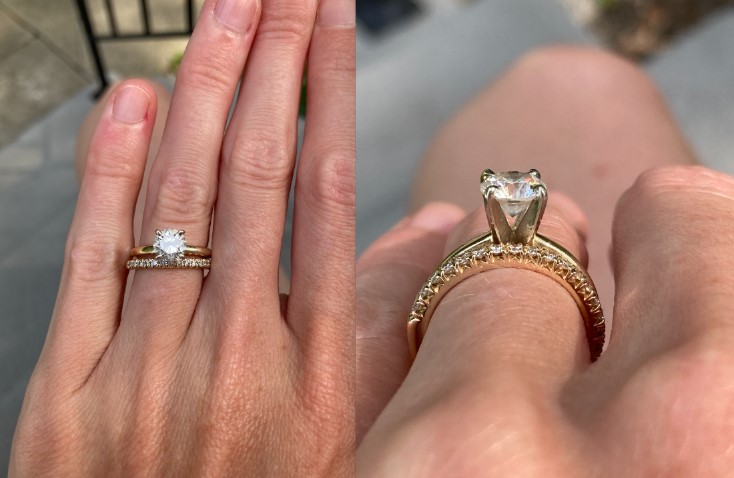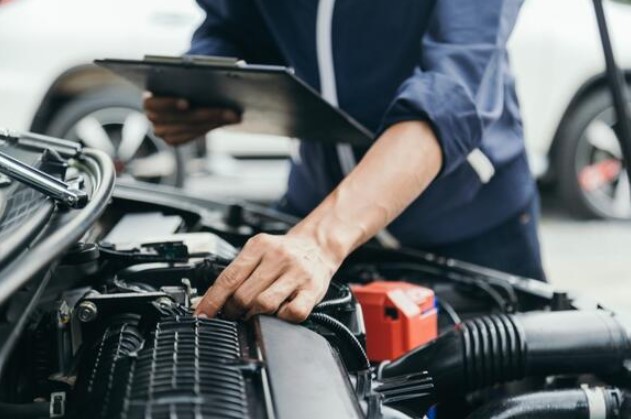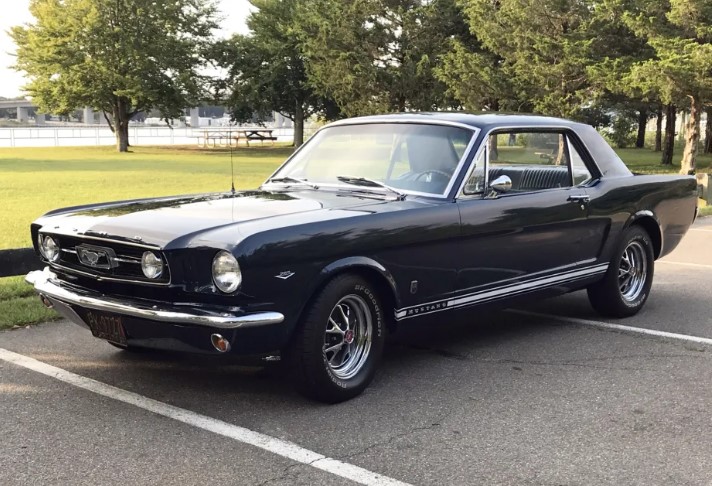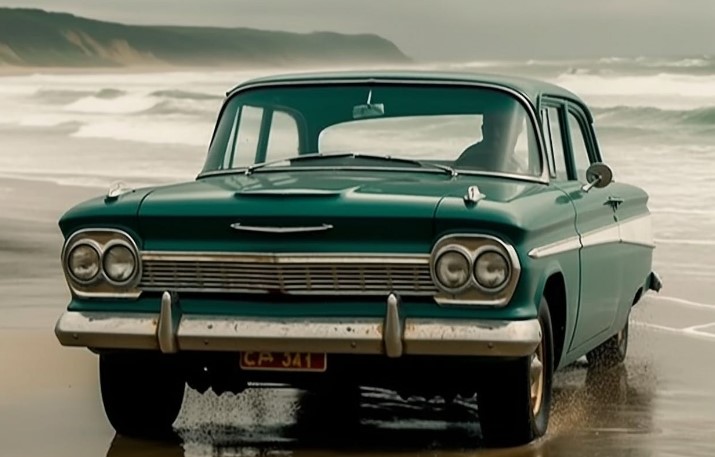
Today is the anniversary of the birth of Edward Gowan Budd. Born on December 28, 1870, in Smyrna, Delaware, his designs and manufacturing prowess changed both the automotive and railroad industries.

Early career
From an early age, Budd had a mechanical aptitude; following high school he apprenticed as a machinist at a Smyrna ironworks. He moved to Philadelphia in 1890, where he worked as a machinist at a foundry and then at a company that manufactured machine tools and hydraulic presses. He went to night school as well, taking classes in drafting and engineering at the Franklin Institute, the University of Pennsylvania and the International Correspondence School.
Thomas Corscaden was a friend of Budd’s who designed a “stamped sheet-steel pulley that was both lighter and cheaper to produce than traditional cast-iron versions and sold the design” to the owner of Philadelphia’s American Pulley Co. Budd went to work at the company in 1898 as its chief draftsman. There, he gained “expertise in stamped steel engineering and industrial-strength welding.”

(Image: coachbuilt.com)
American Pulley manufactured more than pulleys, including stamped steel pedestals that were built for Hale & Kilburn, a Philadelphia furniture manufacturer that specialized in producing seating for railroad, subway and trolley cars. Budd went to work for Hale & Kilburn in 1902, developing pressed steel replacements for the company’s cast-metal products. Using pressed steel instead of cast-metal reduced their weight and cost.

With Budd’s new technology, Hale & Kilburn worked with the Pullman Company (the nation’s largest rail car manufacturer) on a contract for Pennsylvania Railroad, building the first all-steel railcar. That led to Hale & Kilburn manufacturing hundreds of Budd-designed all-steel passenger cars for the Pullman Company in the early 1900s.
The railcars were lighter and stronger. They were also significantly more fire-resistant, which was very important in an industry that had been plagued too frequently by deadly railway passenger fires.

In 1904, Budd designed the first railroad passenger car with seats made entirely from pressed steel, which supplanted cast iron. In 1905, he designed a self-propelled railcar known as a “Wind Splitter.” Budd used a stamped and pressed-steel design; the railcar bodies were swathed entirely in sheet steel. The cars had pointed aerodynamic front ends and rounded tails that previously had been impossible to manufacture.
French chemist Henry Le Chatelier discovered in 1895 that “combustion of equal quantities of acetylene and oxygen produced a 6000° F flame,” which was significantly hotter than any produced by the various gasses previously used. Another Frenchman, David Bourneville, developed a welding technique that was perfected by Morris Lachman, a Hale & Kilburn employee who worked with Budd and deserves credit for his pioneering work in the field. Budd and Lachman also experimented with arc-welding, a technique developed by fellow American C.L. Coffin in 1890. With improvements in the early 1900s, the arc-welding process was used to produce very strong spot welds, which became critical in producing automobile bodies.

Emil Nelson, the chief engineer of the Hupp Motor Car Co., went to Budd in 1911, seeking help to develop a true all-metal body for an automobile. Although improvements in sheet steel production made it possible to produce larger stampings with a uniform thickness, the compound curves needed for automobile bodies were built from numerous individual stampings that had to be hand-welded. Despite this, both Hupp and Budd believed that stamped sheet-steel bodies were the future of the auto industry. Hale & Kilburn began to supply Hupp with pressed steel panels, while Budd began to develop an all-steel automobile body.

The disassembled auto bodies built by Hale & Kilburn were shipped by rail to Detroit where the Hupp Motor Car company workers put them back together, painted and trimmed them in the Hupp factory. The 1912 Hupmobile Model 32 was the first car built in Detroit with an all-steel production body. The Model 32 was offered in a touring, roadster and coupe. However, Nelson left Hupp later in 1912; subsequent Model 32s were equipped with standard composite bodies.
During 1911 Hale & Kilburn was acquired by J.P. Morgan. The company’s management was replaced by Morgan employees who had little to no experience in the metal-stamping business. Budd became frustrated by the new management; he suffered a nervous breakdown and went to Europe to recuperate. He returned to Philadelphia in early 1912 and resigned.

(Photo: Old Images of Philadelphia/m.facebook.org)
Launch of the Budd Company
After leaving Hale & Kilburn, Budd founded his own company on July 22, 1912 in Philadelphia – the Edward G. Budd Manufacturing Company. Budd believed in the potential of supplying the automotive industry, which was growing larger each year.
Budd hired two colleagues from Hale & Kilburn – Joseph Ledwinka and Russell Leidy. Lewinka was an Austrian immigrant whom Budd had hired at Hale & Kilburn. Ledwinka’s talent with sheet metal was “directly responsible for the eventual success of the firm.” From 1912 through the 1940s, Ledwinka was awarded hundreds of patents, many of which generated significant revenues for the Budd Company when they were licensed to other automobile body-building companies and automakers.
The company’s first product was an all-metal truck body, built for a Philadelphia coal distributor. Others invested in the company; it was recapitalized at the end of 1912, moved to a bigger building and more importantly, purchased the company’s first sheet-metal press.
Budd’s efforts at building the all-steel body moved slowly at the beginning; each set of dies required workmen to spend hours before a fault-free stamping emerged from the giant press. Welding was also slow and tedious work. As noted above, Budd had experimented with different welding techniques with Morris Lachman at Hale & Kilburn. Arc welding was the most suitable for Budd’s needs and J.W. Meadowcraft, the company’s director of welding developments, perfected the process after years of research and experimentation. So in addition to its other advancements, Budd also pioneered the use of arc welding in automobile manufacturing.

The early years of the Budd Company
The Budd Company initially specialized in the manufacture of pressed-steel chassis frames for automobiles, at a time when many auto manufacturers were still building cars with wooden frames.
Charles W. Nash and Budd discussed all-metal automobile bodies; both were convinced that all-metal bodies would be the industry norm. Nash was the head of the Buick division of General Motors; a few months later he became GM’s president. He ordered a sample metal body for Buick at the end of 1912, which was followed by an order from Oakland (another GM division) for 2,000 metal touring car bodies. John North Willys was another early supporter of Budd (Willys was profiled in an earlier FreightWaves Classics article). His Willys-Overland company announced a new 6-cylinder auto that would feature a Budd-built all-steel body. Willys placed an order for 2,500 touring car bodies, which led Budd to look for property in Detroit that could be used to produce the large number of bodies on order.

Budd bought the former Detroit factory of the Grabowski Wagon Co. at auction in 1913 and within a few weeks it was producing finished bodies for Oakland that had been shipped from Philadelphia to be painted and upholstered. However, the auto business slowed and Budd was forced to sell the Detroit factory to avoid bankruptcy. Willys helped Budd meet payroll that winter and put in a large order for Willys fenders to help make up for Budd’s losses.
Joseph Lewinka filed a very important patent application on June 17, 1914. Granted on June 22, 1915 and assigned to Budd Manufacturing, U.S. Patent No.1,143,635 contains “design and construction details for a welded all-steel touring-car body.” It was Budd’s most valuable patent, and over the years brought in millions of dollars of orders to the Philadelphia manufacturer.
Unfortunately, the patent was often infringed upon. However, negotiations with the infringing companies usually resulted in a large contract for Budd. There was a notable exception, however. In the late 1910s, the C.R. Wilson Co. of Detroit (a rival auto body company) obtained Budd plans for bodies, dies and welding jigs. However, Budd successfully sued the company for theft, conspiracy and unfair competition.
Hugh Adams was a well-connected salesman from Detroit who joined Budd in 1913. Adams brought in some new investors as well as new contracts. During the year Budd built truck bodies for Packard and Peerless and fenders for Cadillac, Franklin, Jeffery and Willys-Overland. In addition, the Budd Manufacturing Co. produced stamped panels and interior trim for the Cincinnati Car Co. and the Pullman Mfg. Co.

The all-steel automobile body is successful
Budd negotiated with John and Horace Dodge in 1914; they bought 15,000 all-steel open touring bodies in 1915 and 70,000 in 1916. The new Dodge autos were an immediate success. As Budd’s sales director Adams had also been busy, bringing in additional orders for fenders and sheet-metal stampings from Buick, Reo and Ford. By 1916, the Budd Manufacturing Company had over 2,000 employees.
The Dodge’s all-metal bodies looked like wooden bodies from the outside, but before the interior panels and seating were added, the novel all-metal construction was apparent. A framework of stamped steel braces was attached by rivets to the outer bodywork, which was welded together in the usual manner. The body sides were attached to the metal floor, forming a one-piece, all-metal structure to which the doors and seats were attached.
Finishing an all-metal body was a much faster process than that required for a composite (metal over wood) body. Budd’s all-steel bodies were revolutionary. Using wooden frames meant that it could take weeks for a new car’s paint to dry properly, because baking it too quickly could set the body’s wooden framework on fire. Using Budd’s all-steel framework, much higher drying temperatures were used, speeding production significantly.

With an all-steel body, after the exterior metal work was sanded, the primer and enamel color coats were applied and then baked at 450°F for one to two hours in a large oven. The entire process took less than a day – a huge improvement over the many weeks required to sand, prime, paint, varnish and dry a composite body.
Although Budd’s all-metal bodies were comparably priced to composite bodies, a manufacturer could save a great deal of time and money during the painting process. Once painted and trimmed, the structure was bolted on the chassis in the usual manner.
The all-steel Dodge sedan was also a major automotive breakthrough. Other U.S. manufacturers soon followed Dodge’s lead, and by 1923, closed bodies outsold open bodies from then on.
Stamped steel wheels
Budd and Willys established a parallel business (the Budd Wheel Corporation) in 1916 to manufacture automotive wheels out of stamped steel. With the U.S. on the verge of entering World War I, these new wheels rendered wooden artillery wheels nearly obsolete. During the war Budd acquired a license from Michelin to produce disc wheels, and they soon became popular with commercial vehicle manufacturers. Within a few years most automobile and truck wheels were manufactured from stamped steel.

Although Willys-Overland was the new company’s initial customer, by the end of the war, Budd Wheel was producing wheels for Dodge, Ford, Jordan, Studebaker and others.
Willys sold his $1 million share in Budd Wheel to Edward G. Budd in 1921 and the company was reorganized as the Budd Wheel Co. Emil Nelson joined Budd in 1923 and along with Budd engineer C.L. Eksergian developed key improvements to the Michelin design, creating a much stronger wheel.

(Image: MyCompanieswikifandom)
Budd’s wheel business led to work on four-wheel brakes. Ledwinka had begun the project in the late teens; by 1921 he successfully demonstrated the brakes on some Dodge and Rickenbacker chassis. However, the company’s board of directors was fearful to take on Bendix, the nation’s dominant brake manufacturer. However, Budd did manufacture stamped-steel and cast-iron brake drums for many years. It was also one of the first firms to manufacture disc brakes for heavy-duty trucks.
1916-22
Although several luxury automobile manufacturers and custom auto body companies were building totally enclosed cars in the mid-1910s, the style had not been used by the popular-priced automobile manufacturers.
Budd changed all that in 1916, when the company introduced its pillar-less hard-top on the Dodge Brothers chassis. Budd’s all-metal hard-top had a fixed top and rear quarters with optional side curtains.
In 1917 Budd introduced its first all-steel sedan (also for the Dodge Brothers). Budd was sure of steel’s superiority; he had a photo taken of an elephant on top of one of his steel car frames and dared wooden car manufacturers to try the same thing. However, because of World War I, the all-steel sedan did not enter full production until 1919.

Dodge introduced commercial delivery cars with bodies made by both Budd and the H.H. Babcock Co. in the second half of 1917. By the next year, the Dodge Brothers commercial chassis was competing successfully with the Model TT Ford in commercial vehicle sales. Budd shipped its 200,000 all-steel body to Dodge in February 1918.
The war also generated contracts at Budd for Liberty Truck bodies as well as stamped-steel helmets and bomb casings. Years later, Budd told an interviewer, “We don’t like war or war work.” However, Budd built what the government wanted; it was a major supplier to the Allies during both world wars.

In 1922, Budd’s first all-steel coupe was introduced, again on the Dodge chassis.








More Stories
Tips for Negotiating the Best Deal When Selling Your Car
5 Women That Shaped the Automobile and the World Around It (and Us)
Automobile retail sales see double-digit growth in February on robust demand